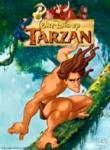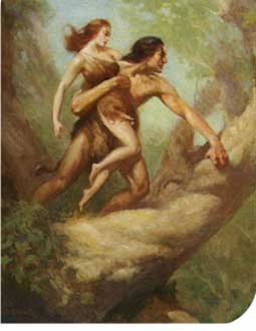 For years, Mohd Syafizul Yasri Mat Yazid’s home reverberated with his yells as he swung like Tarzan from a rope in his room.
For years, Mohd Syafizul Yasri Mat Yazid’s home reverberated with his yells as he swung like Tarzan from a rope in his room.But on Saturday, a silence descended on the house in Kampung Kijang, Kota Baru, Kelantan, when the 14-year-old’s family found him slumped on the floor with the rope coiled around his neck.
"He was still alive when I took him in my arms. He was breathing slowly and foaming at the mouth," his mother, Salmah Mohamad, said.
Neighbours called for an ambulance but he died five minutes before an ambulance arrived.
 Please don't try to be a Tarzan. It is only a fable.
Please don't try to be a Tarzan. It is only a fable.During the early 20th century the American reading public had access to a source of entertainment now long gone: "pulp" magazines. These magazines were printed on cheap paper with a high pulp content, wrapped in garishly illustrated covers, and were brimming with every type of fiction imaginable. Every issue brought you a handful of short stories and the latest installment of two or three different serials, so you had to buy the next issue (and the next) to find out how the tales ended. And then another serial would begin ...
 If you happened to be walking by a newsstand in 1912 you would have stopped to look at the October issue of the All-Story magazine. Perhaps the cover caught your eye: a barbarously clad man sits astride a rampaging lion, his knife raised for the kill, as another man (probably the lion's intended dinner) looks on in horror. The title was as exotic as the illustration: "Tarzan of the Apes ~ A Romance of the Jungle." Fifteen cents would have gotten you a copy.
If you happened to be walking by a newsstand in 1912 you would have stopped to look at the October issue of the All-Story magazine. Perhaps the cover caught your eye: a barbarously clad man sits astride a rampaging lion, his knife raised for the kill, as another man (probably the lion's intended dinner) looks on in horror. The title was as exotic as the illustration: "Tarzan of the Apes ~ A Romance of the Jungle." Fifteen cents would have gotten you a copy.The author bore the rather weighty name of Edgar Rice Burroughs. And glancing at the magazine's contents page you might have realized this story was special, because instead of serializing this lengthy novel the All-Story's editor had decided to run it complete in this single issue. From this one novel sprang two dozen more, over forty movies, hundreds of comic books, radio shows, television programs, Tarzan toys, Tarzan gasoline, Tarzan underwear, Tarzan ice cream, Tarzan running shoes ~ the list is virtually endless. Edgar Rice Burroughs became one of the twentiet20th century's most popular authors, and Tarzan one of the world's best-known literary characters. And all this from one story that came close to never being written at all.
 According to Wikipedia, Tarzan, a character created by Edgar Rice Burroughs, first appeared in the 1914 novel Tarzan of the Apes, and then in twenty-three sequels. He is the son of a British Lord and Lady, marooned on the coast of Africa by mutineers. His parents died when he was an infant, and he was raised by Great Apes of a species unknown to science. Kala is his ape mother. Tarzan (White-skin) is his ape name; his English name is John Clayton, Lord Greystoke. As a young adult, he meets Jane, and when she returns to America he leaves the jungle in search of his true love. Tarzan and Jane marry, and he lives with her for a time in England. They have one son, Jack, who takes the ape name Korak. Tarzan is contemptuous of the hypocrisy of civilization, and he and Jane return to Africa where, both being immortal, they still live. Along with Doc Savage and Sherlock Holmes, Tarzan is one of the cornerstones of the Wold Newton family created by Philip José Farmer.
According to Wikipedia, Tarzan, a character created by Edgar Rice Burroughs, first appeared in the 1914 novel Tarzan of the Apes, and then in twenty-three sequels. He is the son of a British Lord and Lady, marooned on the coast of Africa by mutineers. His parents died when he was an infant, and he was raised by Great Apes of a species unknown to science. Kala is his ape mother. Tarzan (White-skin) is his ape name; his English name is John Clayton, Lord Greystoke. As a young adult, he meets Jane, and when she returns to America he leaves the jungle in search of his true love. Tarzan and Jane marry, and he lives with her for a time in England. They have one son, Jack, who takes the ape name Korak. Tarzan is contemptuous of the hypocrisy of civilization, and he and Jane return to Africa where, both being immortal, they still live. Along with Doc Savage and Sherlock Holmes, Tarzan is one of the cornerstones of the Wold Newton family created by Philip José Farmer.So, Kids, don't Tarzan around.
No comments:
Post a Comment